Genghis Khan was the founder and first Great Khan of the Mongol Empire, which became the largest contiguous empire in history after his death. He came to power by uniting many of the nomadic tribes of Northwest Asia. Take a look below for 30 more fascinating and interesting facts about Genghis Khan.
1. After founding the Empire and being proclaimed Genghis Khan, he launched the Mongol invasions that conquered most of Eurasia.
2. Campaigns initiated in his lifetime include those against the Qara Khitai, Caucasus, and Khwarazmian, Western Xia and Jin dynasties.
3. By the end of his life, the Mongol Empire occupied a substantial portion of Central Asia and China.
4. Before Genghis Khan died, he assigned Ogedei Khan as his successor. Later, his grandsons split his empire into khanates.
5. Genghis Khan died in 1227 after defeating the Western Xia. He was buried in an unmarked grave somewhere in Mongolia.
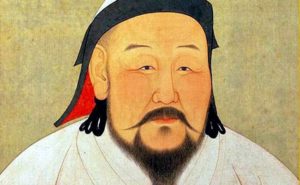
6. His descendants extended the Mongol Empire across most of Eurasia by conquering or creating vassal states in all of modern day China, Korea, the Caucasus, Central Asia and substantial portions of Eastern Europe and Southwest Asia.
7. Genghis Khan decreed the adoption of the Uyghur script as the Mongol Empire’s writing system.
8. He practiced meritocracy and encouraged religious tolerance in the Mongol Empire, and unified the nomadic tribes of Northeast Asia.
9. Although known for the brutality of his campaigns and considered by man to have been a genocidal ruler, Genghis Khan is also credited with bringing the Silk Road under one cohesive political environment.
10. In 1201, Genghis Khan was shot in the neck during a battle and asked the defeated army who had shot “his horse,” trying to downplay the injury. The archery voluntarily confessed that he shot Genghis Khan himself and not his horse. He refused to beg for mercy saying if Genghis Khan desired to kill him, it was his choice, but if he would let him live, he would serve Genghis Khan loyally. Genghis Khan spared him, turning him into a great general.
11. When Genghis Khan sent a trade caravan to the Khwarezmid Empire, the governor of one of the city seized it and killed the traders. Genghis Khan retaliated by invading the empire with 100,000 men and killing the governor by pouring molten silver down his eyes and mouth. Genghis Khan even went so far as to divert a river through the Khwarezmid emperor’s birthplace, erasing it from the map.
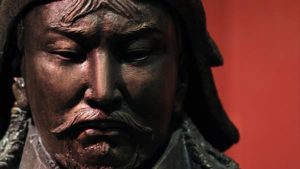
12. He killed an estimated 40 million people, resulting in a mad made climate change. The Mongol invasions effectively cooled the planet, scrubbing around 700 million tons of carbon from the atmosphere.
13. His chief adviser was a capture scholar named Yelu Chucai. His contribution to the Mongol Empire was to suggest that the Mongols not kill everyone, but tax them instead.
14. Genghis Khan would marry off a daughter to the king of an allied nation, dismissing his other wives. Then, he would assign his new son-in-law to military duty in the Mongol wars, while the daughter took over the rule. Most of his sons-in-law died in combat, giving him power over Mongol lands.
15. There’s a place in Mongolia called Ikh Khorig that was declared sacred by Genghis Khan. The only people allowed to enter it were the Mongol Royal Family and a tribe of elite warriors, the darkhat, whose job was to guard it, punishment for entering being death. They carried out their task for 697 years, until 1924.
16. Genghis Khan exempted the poor and clergy from taxes, encouraged literacy, and established free religion, leading many people to join his empire before they were even conquered.
17. Shah Jahan, the emperor who built the Taj Mahal, was a direct descendant of Genghis Khan.
18. The Mongols celebrated a victory over the Russians by laying survivors on the ground, dropping a heavy wooden gate on them, and then having a victory banquet on top of it while the victims suffocated and were crushed to death.
19. Toregene Khatun, the daughter-in-law to Genghis Khan, ruled the Mongol Empire for 5 years at the height of its power and was arguably the most powerful woman in the history of the world.
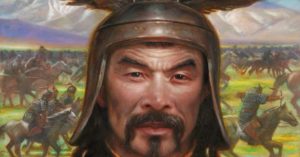
20. The Mongols killed so many people in the Iranian Plateau that some historians estimate that Iran’s population didn’t again reach its pre-Mongol levels until the mid 20th century.
21. Genghis Khan had about 500 wives, many of them given to him by opposing rulers as peace offerings.
22. His father was killed when he was young and as an adolescent, he murdered his half-brother in an argument over food.
23. Genghis wasn’t his real name. He was born as Temujin, which means “blacksmith.”
24. Genghis Khan was known for holding long grudges. He once ordered the execution of an entire royal family after they refused to provide him with additional troops for a war campaign.
25. His archers were able to shoot forward and backward on horseback at full gallop.
26. One of Khan’s sons attempted to expand the Mongol Empire into Europe, but the damp weather had turned much of Hungary into impassable swampland.
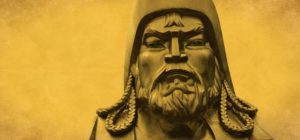
27. When he destroyed the Afghan city of Herat in 1221, there were reportedly only nine survivors of the city’s population of 400,000.
28. His main reason for expanding his empire wasn’t for riches, but to challenge and conquer other empires.
29. As a teenager, he and his wife were abducted by a rival clan. Khan was made into a slave before eventually escaping.
30. Genghis Khan is considered the most successful biological father in human history with over 16 million descendants in Central Asia.

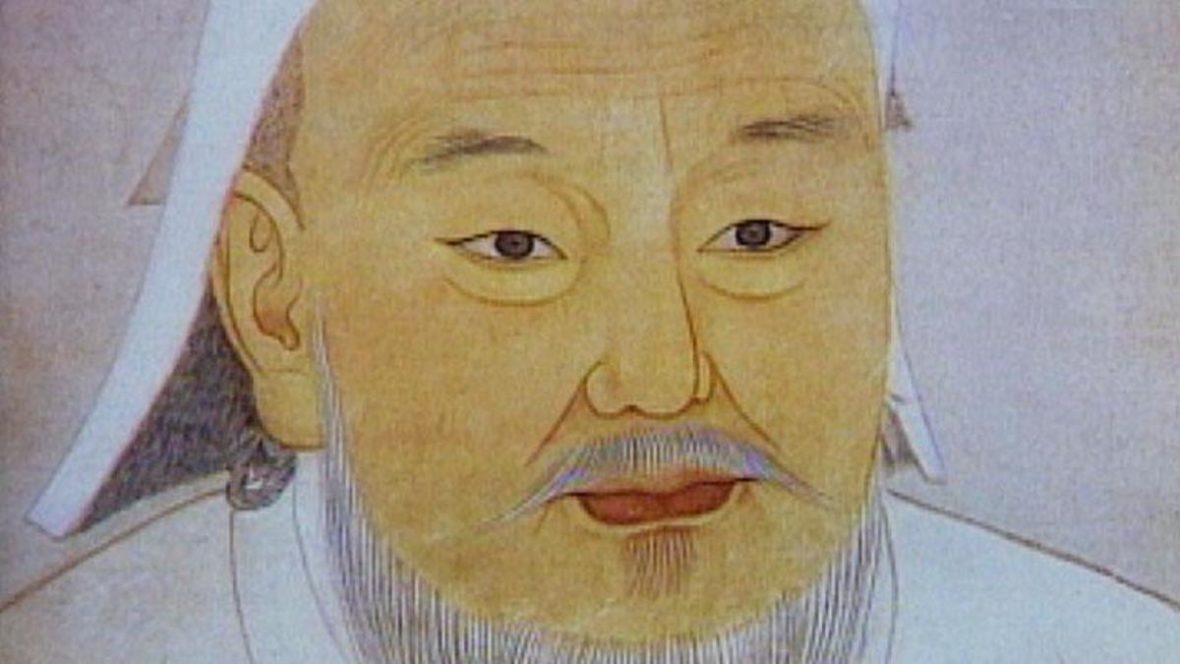



One Comment
Pingback:
August 9, 2018 at 1:26 am